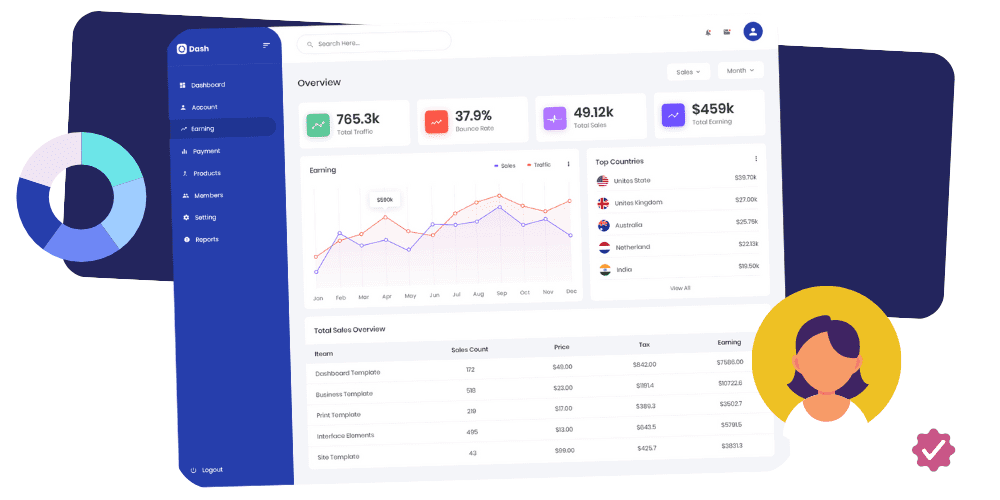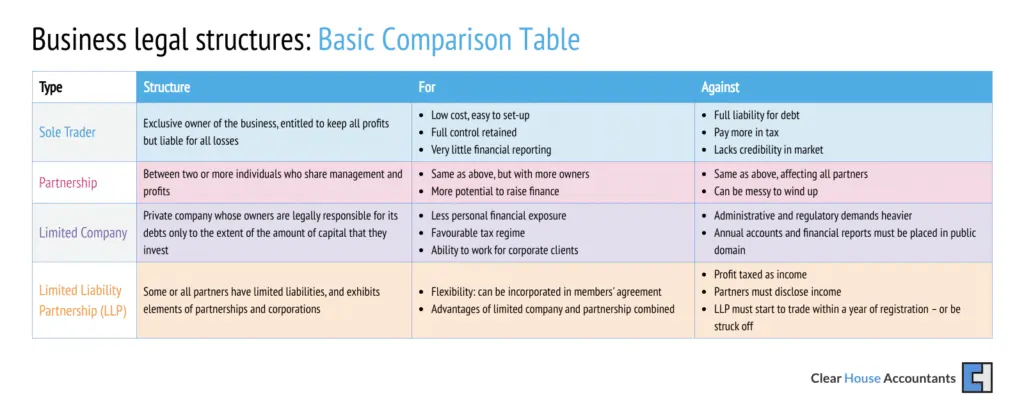Choosing the right business structure in the UK is crucial when launching a startup since it relates significantly to tax implications, liabilities, and business scalability. As a new business owner, you cannot choose the right business legal structure if you are unfamiliar with what it is and the types of business structures. More importantly, each business structure comes with a distinct set of legal forms for business operations, which means that different requirements and rules must be followed for the entity to remain compliant. This guide explains different UK legal structures available for startups, enabling you to determine which option best suits your business ambitions and needs.
What is a Legal Business Structure?
In simplest terms, it is a legal structure that confirms the entity’s legal obligations, its legal position relative to its owners/investors, and how the entity’s tax and financial affairs are managed.
Why Is It Important To Choose the Right Type of Business Structure in the UK?
Often, it is seen that entrepreneurs do not realise the importance of choosing between UK legal structures. Notably, the right structure enables a business to forge a successful path in a competitive market while keeping legal liabilities and rules in mind, which can help it get ahead of the competition. It allows owners and investors to strategise personal assets and liabilities, calculate and remit individual income tax, and position the company for expansion by facilitating fundraising and offering investment incentives.
What are the Types Of Business Structures in the UK?
There are four types of business structures for a small business, which depend on whether the company is categorised as incorporated or unincorporated.
- Sole Trader
- Partnerships
- Limited Liability Partnerships
- Limited Company
Before you delve into the structures, it is significant to understand how incorporated and unincorporated structures stand apart:
Learning the Difference Between Unincorporated and Incorporated Structures
Principally, an unincorporated business does not exist separately from its owners in the legal context. It means your business assets and liabilities are the same as your personal assets and liabilities. Now, to prevent the liabilities (debts) of your business from becoming your own, you must plan and take the necessary precautions. For instance, setting aside funds or considering insurance options can help protect your personal assets, such as your home and possessions, if your business faces financial challenges.
The unincorporated business structures are:
- Sole Traders
- Partnerships.
In contrast, the two incorporated business structures include:
- Limited Liability Partnerships
- Private companies limited by shares.
Meanwhile, an incorporated business exists as a ‘separate legal person,’ meaning your incorporated company can:
- Enter into its own contracts
- Owns its own assets
- Assume its own liabilities
- Initiate legal actions and be the subject of lawsuits.
Thus, the owners or the directors running the company bear no responsibility for any debts and damages it incurs, and their personal assets remain safeguarded. Now, the four types of business structures in the UK will be discussed below, so you can decide on what business structure meets your goals:
Sole Trader
A sole proprietorship is the most common choice for a startup, as it requires minimal setup and administrative requirements. The small business owner is personally responsible for filing income tax returns. A sole proprietorship is not required to register at Companies House, although the owner must notify HMRC.
Operating as a sole trader offers complete financial autonomy, but as a sole trader, you will have unlimited liability for your personal and business debts. For funding, you can utilise personal savings, property or assets for initial capitalisation, and you can also rely on external funding and other sources.
Choosing the sole trader business structure entails several obligations, including registration, tax filing and reporting, and meeting the requirements to ensure compliance.
Partnerships
The partnership is another legal structure of a business, which is an extension of the sole trading structure. Under the umbrella of a partnership, a business owner often works in partnership with their spouse, family members or a friend. It works similarly to sole trading but has the advantage of involving two or more individuals. These individuals are liable for the profits and losses as per the articles of association. The primary difference lies in the ownership of debts and liabilities that each party is responsible for.
There are different types of partnerships, most commonly unlimited (general) and limited partnerships.
Limited Liability Partnership (LLP)
Importantly, there is another important type of partnership called Limited Liability Partnerships (LLPs), where all partners have limited liability, meaning the LLP business structure is a separate legal entity from its owners.
Primarily, in limited liability partnerships, there are no limits on the number of partners. However, these types of alliances require at least two designated members. These selected members will ensure that filings are completed accurately and on time. Typically, an LLP is considered safe as it protects each member’s assets, even if the partners have taken a loan against them to invest in the business.
Did you know that an LLP agreement forms the foundation of setting up and running a limited liability partnership? This agreement clarifies shares of profits for each member, roles, and their liabilities. Moreover, the agreement will decide how a member can leave or join the partnership.
Limited Company
Lastly, a limited liability company is another business structure that shields its owners from liability and issues shares to its owners. A private limited company has two types of structures to choose from and incorporate:
- Limited by shares
- Limited by guarantee.
Limited Company By Shares
The widely used business structure in the UK is a limited by shares company. It particularly serves entrepreneurs who intend to run a commercial or profit-driven business, either alone or in partnership with others. Moreover, as the name suggests, a limited by shares company has shares owned by its shareholders (members) and retains any profits it makes.
The concept of shareholders is inextricably tied to a limited company by shares. The shareholders have ownership in the company proportional to their shareholding, with each share representing a “slice” of the company and determining their rights to dividends and voting power. Notably, shares and dividends are the subjects that you must fully comprehend if you opt for setting up a limited company business structure.
Limited Company By Guarantee
On the other hand, a limited liability company limited by guarantee is a non-profit business structure that does not have shareholders or shares. Instead, it has members (guarantors) who promise or guarantee to contribute a fixed, small amount (often just £1) if the company needs to be dissolved and has to pay debts. More crucially, the company reinvests any profits it generates back into the business, rather than distributing them among its members. Therefore, this business structure is ideal for those wanting to accomplish charitable objectives.
Likewise, limited companies limited by guarantee must have a director and a guarantor to run the business. The company directors are responsible for managing the company and have no personal liability for business debts unless they breach their duties of care and diligence. Moreover, the directors must ensure that all accounting reports and records are prepared.
How To Choose The Best Business Structure?
While you have now grasped the core concepts of the four types of UK legal structures for businesses, the question remains: Which structure is most suitable for your business type?
Notably, the answer depends on which business structure in the UK best suits your needs. To help you in this connection, the following table illustrates the fundamentals of the four structures, their advantages, and disadvantages to help you compare and reach an informed decision.
Summary
All in all, understanding types of business structures in the UK helps you build a successful business from the ground up. With the right business structure, your business can reap maximum tax benefits, fulfil legal duties, and continue to grow. Nevertheless, each of the four main types of business structures discussed above has its own pros and cons based on the nature of the business. The dedicated and certified startup accountants at Clear House Accountants can help you in your business’s journey to avoid future challenges and ensure compliance with legal obligations.











































































